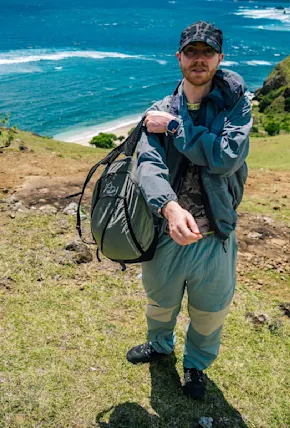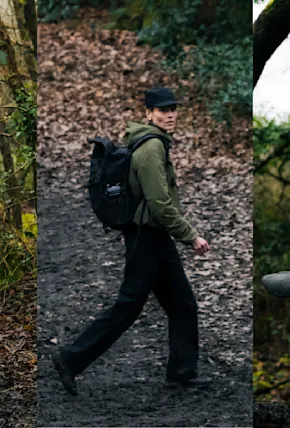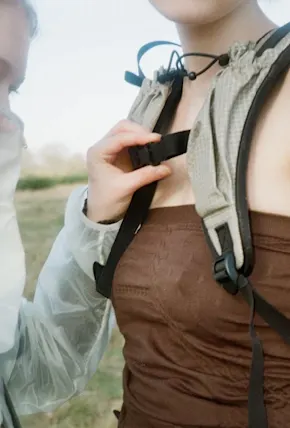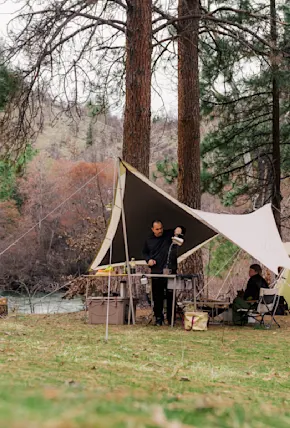How to choose the right brand for your outdoor activities
Identify Your Preferred Activities: Start with your current roster of preferred outdoor activities and choose the brand that builds products within that sphere. Being realistic about what you need—i.e. Not buying a parka built to summit Denali when you only plan to take it on moderate hikes—will serve you better in the long run.
Dream Bigger: Whiplash! But really—there is space for a reasonable level of aspiration when it comes to picking a brand. For example, while most Arc’teryx gear is overbuilt for casual use, they create many pieces that could come in handy if you do take up mountaineering. And you’ll be plenty comfortable on day hikes.
Are the leading outdoor apparel brands sustainable?
Many of them definitely try to be. Patagonia is a pioneer of sustainable trends in the outdoor industry, using recycled materials, organic cotton, and innovative programs like Worn Wear to extend product life. The North Face has championed circularity with its Renewed collection and designs with sustainable materials like recycled polyester. Columbia Sportswear integrates Responsible Down Standard (RDS) and supports the reduction of water and energy use. Arc'teryx focuses on product durability, repair services, and reducing its environmental footprint and has pledged to reach net-zero in terms of climate impact by 2050 or sooner. REI Co-op champions sustainability with a commitment to climate-neutral operations by 2030. These brands collectively aim to protect the planet by reducing waste, lowering emissions, and using renewable or recycled resources in their designs.
Frequently Asked Questions
What are the best outdoor clothing brands?
There’s no one best outdoor clothing brand, they all have slightly different specialties. You can really only determine what’s best for you if you have a sense of your favorite sports, aspirations, and budget. At the end of the day, try not to evaluate any piece of gear you need based on the brand it comes from—the quality of its material and the way its designed matters much more than the logo affixed to it.
What are the best Scandinavian outdoor clothing brands?
A quick answer is below. Though for the real deal, check out our guide to the best Scandinavian outdoor brands here.
Helly Hansen: Helly Hansen was founded in 1877 in Norway by Captain Helly Juell Hansen and makes killer gear for harsh weather conditions in honor of their original waterproof oilskin jackets for sailors.
Fjallraven: Fjällräven is known for its sustainability practices and timeless Scandinavian style and craftsmanship. On top of offering solid, core, outdoor adventure products, it is definitely the best outdoor clothing brand for Swedish style and fashion. They also make my favorite hiking pants.
Houdini: Houdini is a Swedish outdoor brand founded in 1993 and is known for its innovative circular design. The premium outdoor clothing brand makes truly beautiful ski jackets and bibs and has been on the forefront of sustainability since its inception.
What are the best European outdoor clothing brands?
Another tough question, as "best" is so subjective. However, you can't go wrong with the following three favorites of our editors here at Field Mag HQ.
Mammut: Mammut specializes in climbing, mountaineering, and hiking equipment. Mammut uses innovation, durability, and Swiss precision to make sturdy products for all types of outdoor recreation, including my favorite mountaineering backpack.
Rab: Rab was founded in 1981 by climber Rab Carrington in the UK and makes some of the best insulated jackets and sleeping bags for alpine and extreme conditions. They also make my wife’s favorite rain jacket.
Salomon: Salomon is a worldwide outdoor powerhouse that currently has a huge North American presence but was founded in 1947 in the French Alps. They make some of my personal favorite hiking boots as well as shoes and techwear for trail running.
Not sure what gear from these companies you should get? Joe rounded up a complete list of hiking essentials for beginners here.















